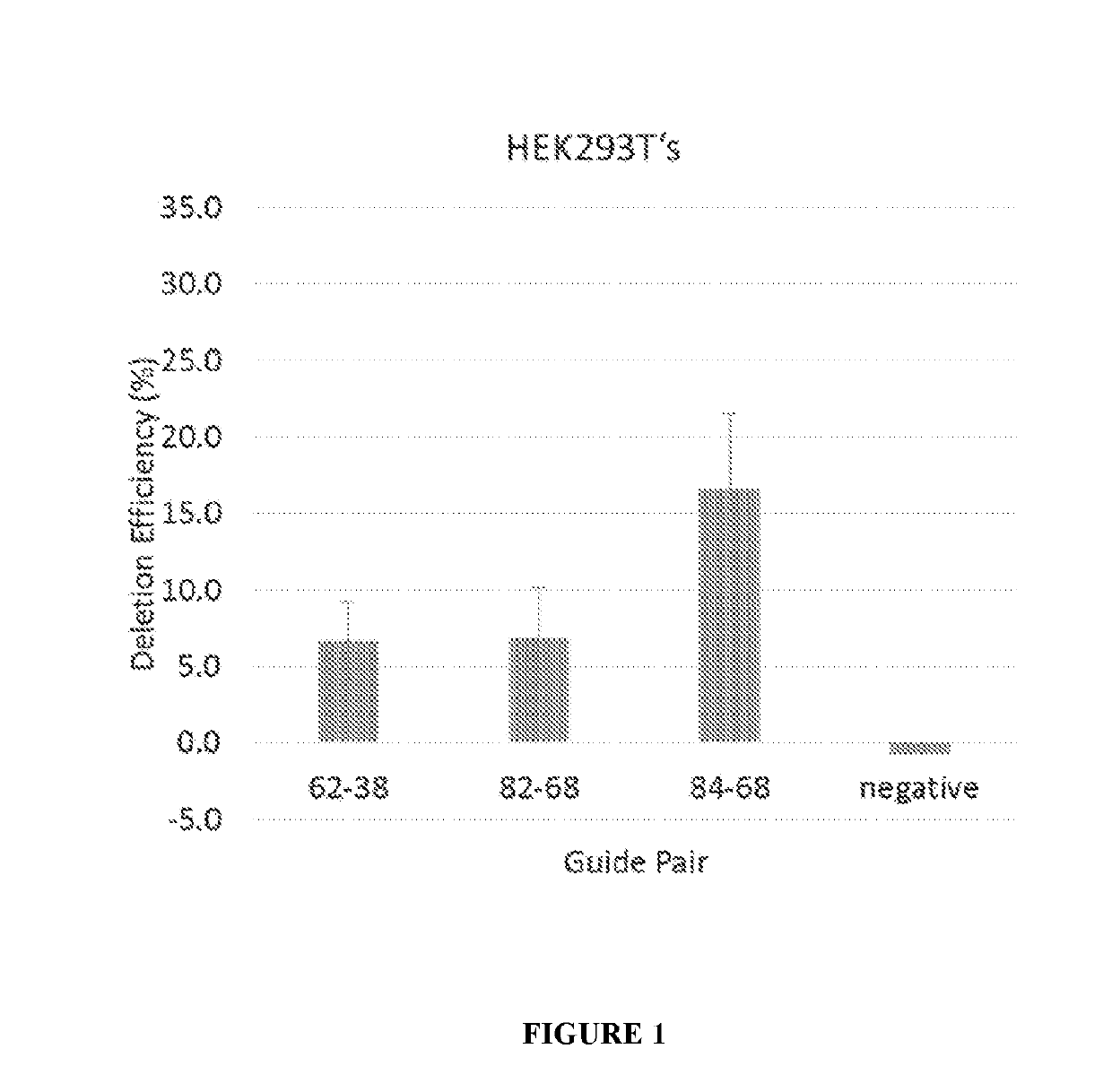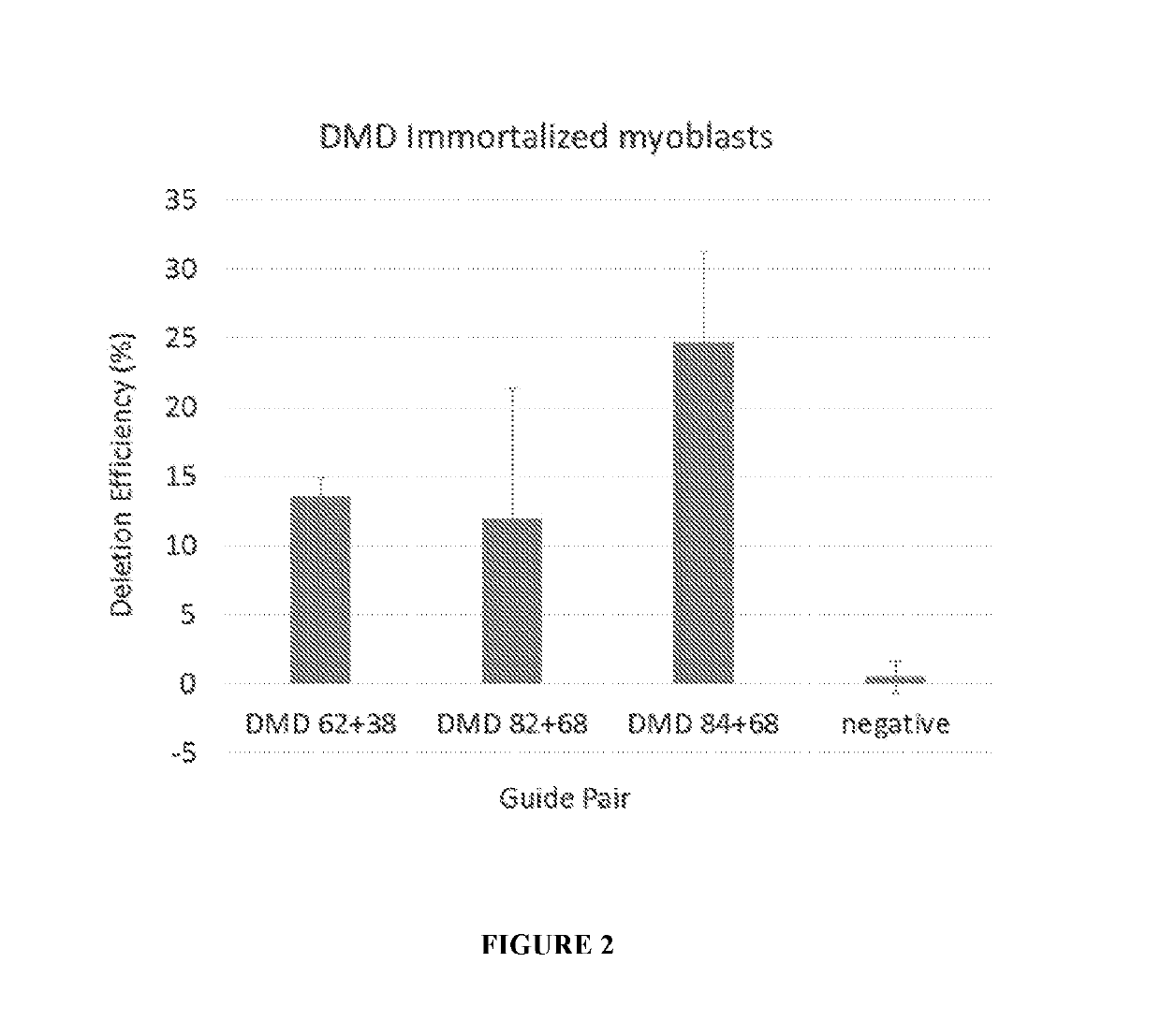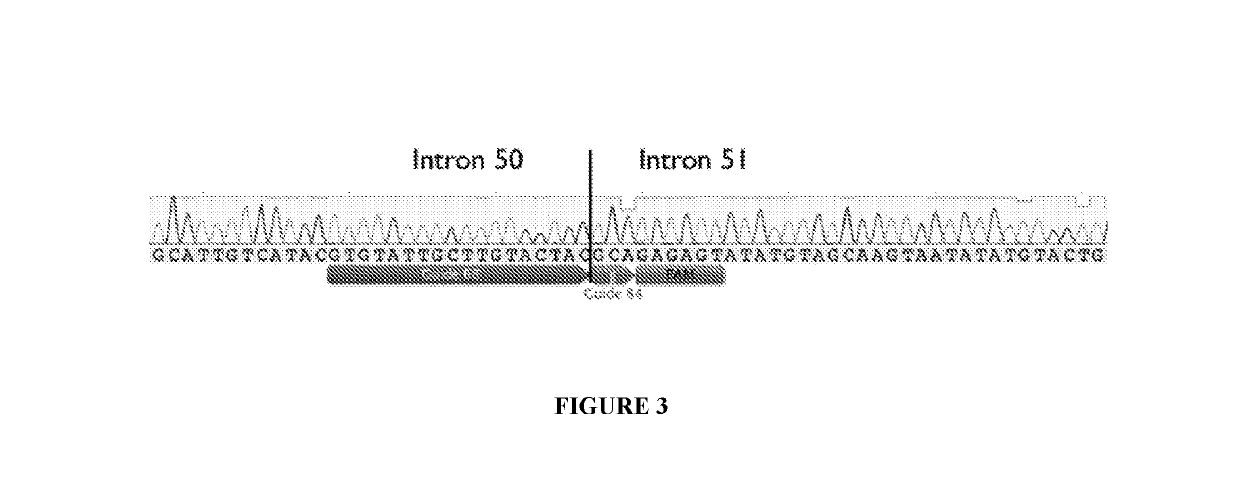Crispr/cas-related methods and compositions for treating duchenne muscular dystrophy
a duchenne muscular dystrophy and composition technology, applied in the field of gene expression alteration, genome engineering and genomic alteration of genes, can solve the problems of insufficient temporary gene expression for inducing therapeutic effects, laborious and specialized expertise in protein engineering necessary for manipulating protein-dna interaction,
- Summary
- Abstract
- Description
- Claims
- Application Information
AI Technical Summary
Benefits of technology
Problems solved by technology
Method used
Image
Examples
example 1
of Exon 51 of Human Dystrophin Genes by AAV Vectors in Immortalized DMD Patient Myoblasts
[0175]12 plasmid AAV vectors, each of which encodes an S. aureus Cas9 molecule and one pair of gRNA molecules selected from the 12 gRNA pairs list in Table 1, were made. The codon optimized nucleic acid sequence encoding the S. aureus Cas9 molecule Cas9 molecule is set forth in SEQ ID NO: 29. Among the 12 plasmid AAV vectors, three plasmid AAV vectors encoding gRNA pairs (84+68), (82+68), and (62+38), respectively, were transfected into HEK293T cells, and were electroporated into immortalized human DMD patient myoblasts. Cells were differentiated, and RNA and protein were collected. End point PCR and droplet digital PCR was performed on gDNA and cDNA, western blot on the protein.
[0176]Methods and Materials
[0177]Immortalized human DMD patient myoblasts including a deletion of exons 48-50 were cultured in skeletal muscle media (PromoCell) supplemented with 20% FBS, 1% antibiotic, 1% GlutaMAX, 50 μ...
example 2
of Exon 51 of Human Dystrophin Genes by AAV Vectors in Humanized Mice Including Human Dystrophin Gene
[0182]Mouse models, including humanized mouse models, are considered useful in evaluating and adapting compositions and methods, such as those disclosed herein, for the treatment or prevention of disease in human and animal subjects. See, e.g., E. Nelson et al., Science 10.1126 / science.aad5143 (2015), M. Tabebordbar et al., Science (2015). 10.1126 / science.aad5177, and Long et al., Science (2016; Jan. 22); 351(6271):400-403, all of which are hereby incorprated by reference in their entirety. For example, skilled artisans will appreciate that changes in genotype and / or phenotype observed in humanized mouse models of DMD can be predictive of changes in genotype and / or phenotype in human patients treated with the compositions and methods of the present disclosure. In particular, a method or composition that is efficacious in rescuing a disease (or disease-like) genotype or phenotype in a...
PUM
| Property | Measurement | Unit |
|---|---|---|
| concentration | aaaaa | aaaaa |
| length | aaaaa | aaaaa |
| composition | aaaaa | aaaaa |
Abstract
Description
Claims
Application Information
 Login to View More
Login to View More - R&D
- Intellectual Property
- Life Sciences
- Materials
- Tech Scout
- Unparalleled Data Quality
- Higher Quality Content
- 60% Fewer Hallucinations
Browse by: Latest US Patents, China's latest patents, Technical Efficacy Thesaurus, Application Domain, Technology Topic, Popular Technical Reports.
© 2025 PatSnap. All rights reserved.Legal|Privacy policy|Modern Slavery Act Transparency Statement|Sitemap|About US| Contact US: help@patsnap.com



